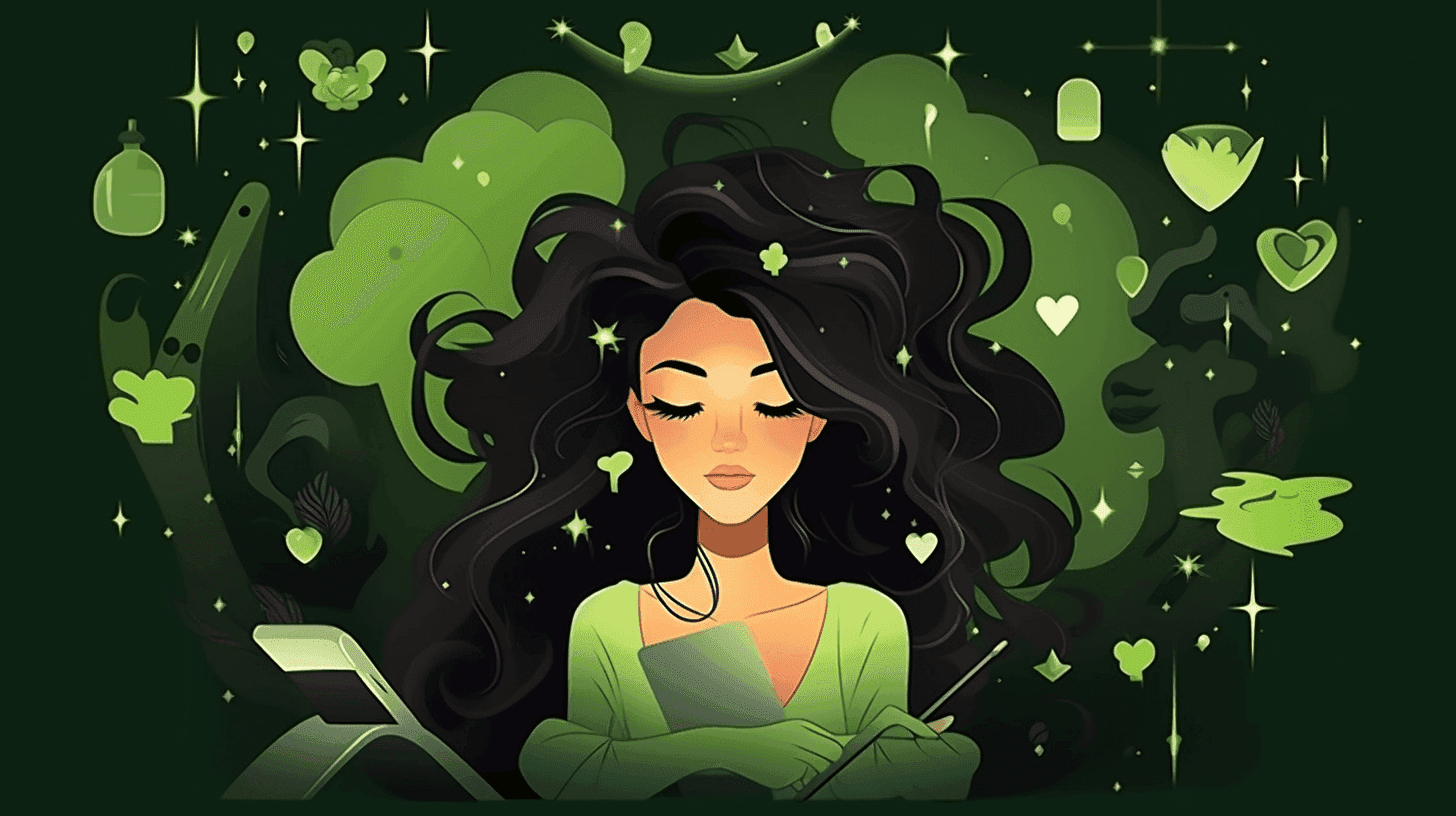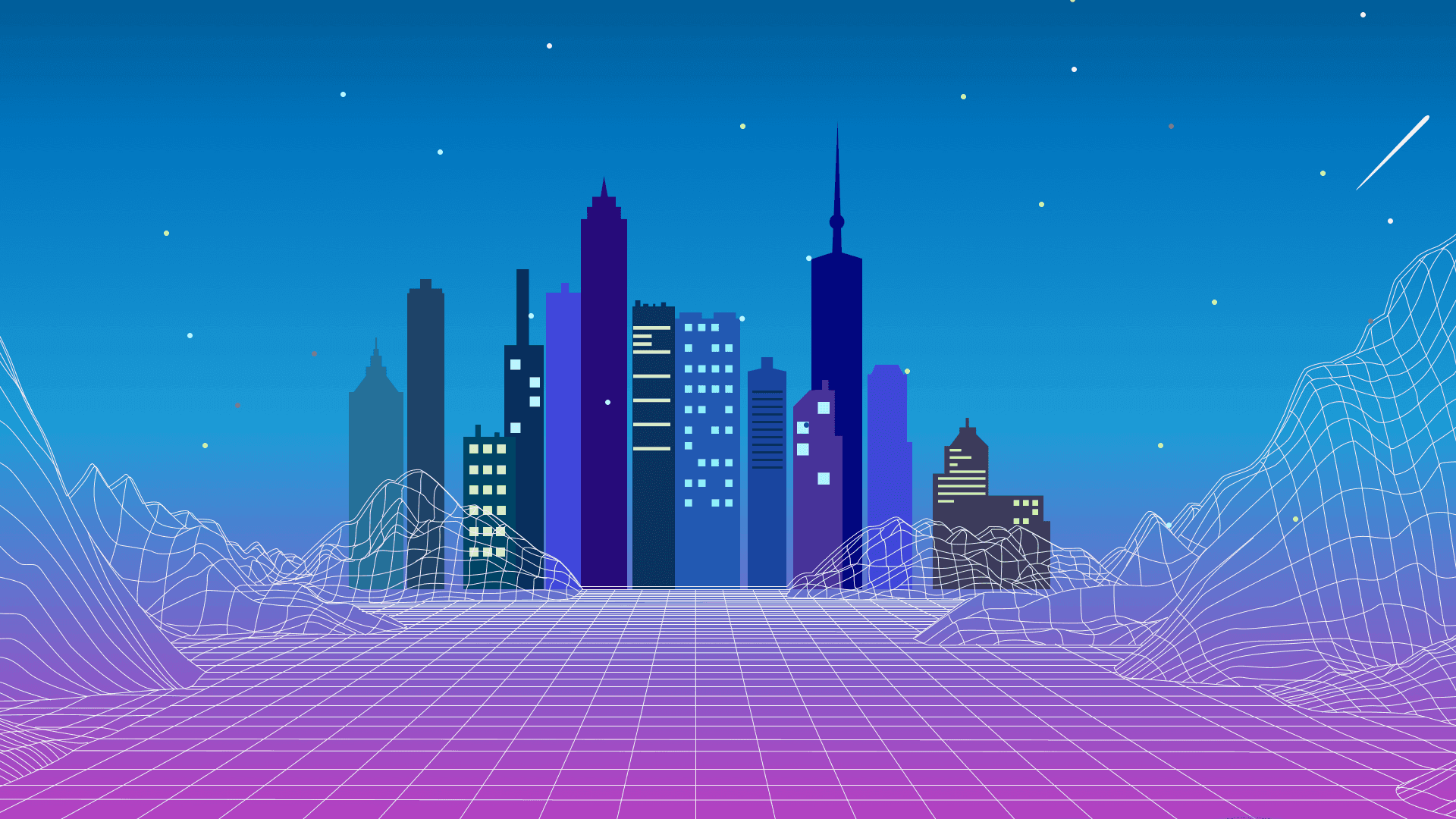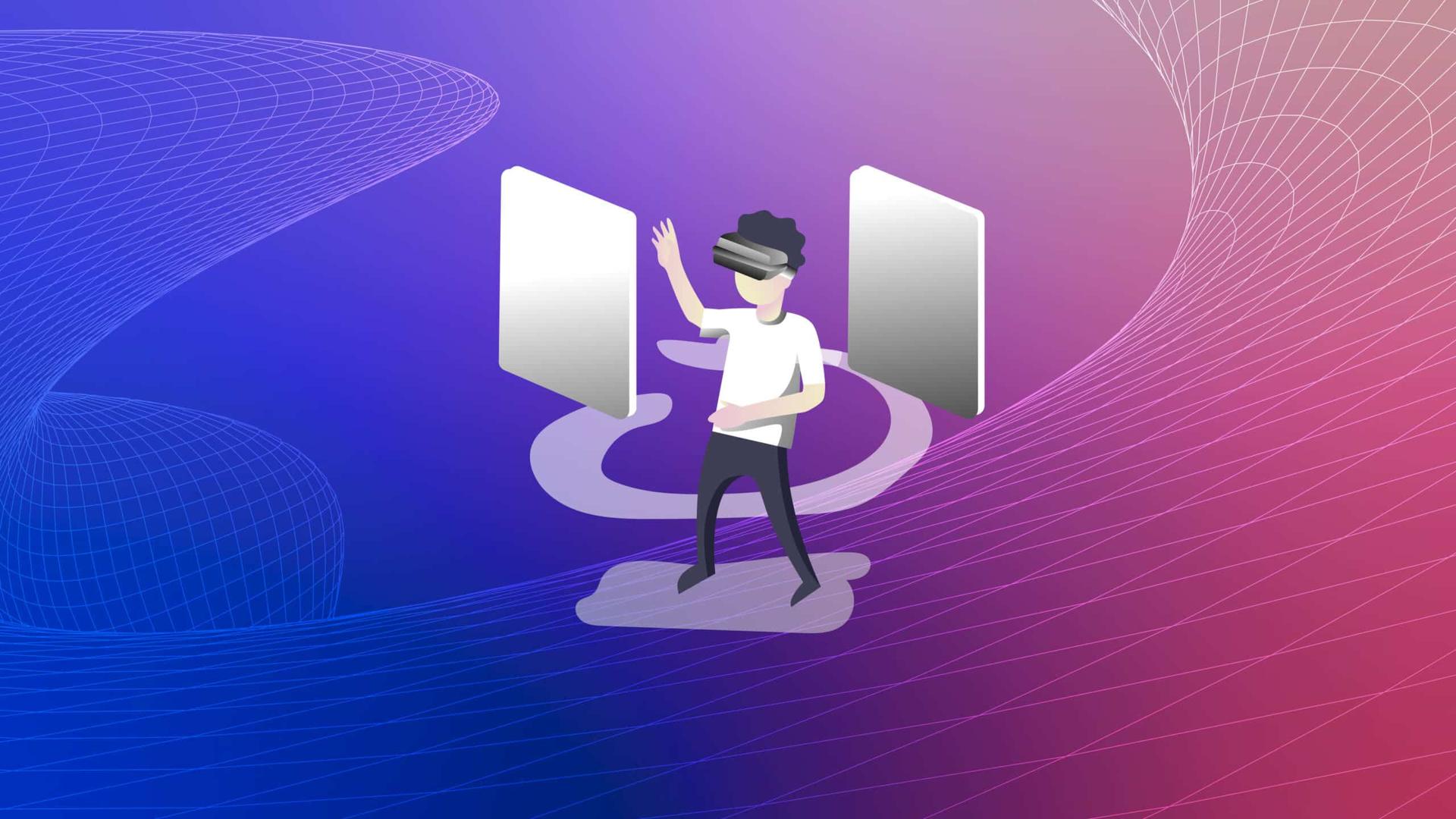Beauty and Personal Expression In Digital Avatars

Digital avatars have become integral to our online lives, shaping how we present ourselves and interact digitally. Personal expression has gained tremendous prominence in an era where online identities often hold as much significance as offline personas.
This blog post delves into the fascinating world of digital avatars, their evolving role in defining our online identities, and the increasing importance of personal expression in the vast landscape of the digital space.
Join Metastack as we explore how these two elements intertwine and influence how we navigate the virtual world, impacting how we perceive and project ourselves in this ever-expanding digital universe.
What are the Digital Avatars?
Digital avatars are graphical representations of individuals in a digital environment. They can be simple 2D icons, elaborate 3D models, or anything in between. These avatars serve multiple purposes depending on the platform or application they're used in. Here's a breakdown of different contexts in which digital avatars are used:
Video Games: Players often use avatars to represent themselves digitally. These avatars can be customized to reflect the player's preferred appearance, personality, or style. Examples include characters in MMOs (Massively Multiplayer Online games) like "World of Warcraft" or avatars in virtual worlds like "Second Life."
Social Media and Messaging: Services like Apple's Memoji or Bitmoji let users create digital representations of themselves, which can be used in messages, on social media profiles, and more.
Virtual Reality: In VR spaces like Facebook's Horizon Workrooms or VRChat, users have avatars to customize and use to interact in a three-dimensional digital environment.
Augmented Reality: In AR applications, avatars might represent users in an overlay of the real world.
Professional and Education Settings: Avatars are increasingly being used in virtual workplaces and learning environments, enabling interaction in a more personalized manner than just a name or generic icon.
AI and Chatbots: Some advanced chatbots or virtual assistants use avatars to create a more human-like interaction experience. These avatars might have facial expressions, voice modulations, and other features to make the interaction feel more natural.
Digital Art and Entertainment: Digital avatars can also be created for entertainment purposes, like virtual pop stars (e.g., Hatsune Miku) or the rise of "VTubers" – virtual YouTubers who use animated avatars instead of showing their real faces.
Personal AI Avatars: With the advancement of A.I., some services allow for the creation of personal avatars that can interact, speak, or perform tasks on behalf of the user. They might be used in videos, digital communication, or even as AI-driven doppelgangers.
E-commerce and Fashion: Digital avatars are being used to try on clothes virtually or to model accessories in an online shopping environment.
As technology continues to evolve, the use and sophistication of digital avatars will likely expand, blurring the lines between digital and physical identities.
Evolution Timeline of Digital Avatars
Digital avatars have evolved remarkably, transcending their origins in early gaming to become central figures in the contemporary metaverse. This journey reflects technological advancements and shifting societal perceptions and norms regarding beauty standards and digital representation.
Let's take a step back in time and explore the timeline of digital avatars, their influence on our online Identities, and how they have expanded the horizons of personal expression.
1. Early gaming era (1980s-1990s):
Digital avatars debuted as pixelated characters in video games like Pac-Man and Space Invaders. At this stage, aesthetics were rudimentary, and the primary focus was on gameplay rather than visual representation. However, these early avatars set the stage for what was to come.
2. Rise of virtual worlds (2000s):
As virtual platforms like Second Life gained popularity, avatars became increasingly customizable. This platform started a change that created a more elaborate avatar design, allowing users to express their personalities and desires in virtual spaces. Beauty norms in these worlds started diversifying, reflecting users' diverse interests and identities.
3. Social media era (2010s):
With the proliferation of social media platforms, avatars found a new role in online communication. Users could now personalize their profiles with avatars representing their idealized self-images. This period saw a significant shift in how people perceived and projected their online identities through their digital alter egos.
4. Metaverse and beyond (2020s and beyond):
The current decade has witnessed a monumental leap in avatar technology, driven by the development of the metaverse. Avatars have become more lifelike and capable of mirroring our physical appearances. Yet, this progress has raised questions about the aesthetic boundaries between the real and the digital, challenging traditional beauty standards.
The changing landscape of digital avatars carries socio-cultural implications, blurring the lines between reality and the virtual world. As avatars evolve, they empower individuals to embrace their unique identities, further enhancing personal expression while reshaping our understanding of beauty standards in the ever-expanding digital universe.
The Merging of Real-World Beauty Standards with Digital Realms
In the world of digital avatars, real-world beauty standards and the digital realm are merging. This fusion reshapes avatar design and sparks discussions about beauty's role in our Online Identities.
Influence of real-world beauty trends on avatars
Advancements in technology are blurring the lines between real-world and digital aesthetics. Beauty trends such as facial features, hairstyles, or fashion choices influence your avatar customization. Users incorporate these trends into their avatars, enabling more personalized personal expression.
The commodification of beauty in virtual platforms
Virtual platforms offer tools to enhance avatars to match personal and societal beauty ideals. Users can buy virtual cosmetics, clothing, and accessories for their avatars, reflecting beauty's commercialization in these spaces. These possibilities raise questions about how commerce impacts our perception of beauty in the digital realm.
The interplay of real-world beauty trends, avatar design, and beauty commodification has socio-cultural implications. It reflects changing beauty standards in a world where digital representation is intertwined with our lives. This convergence shapes our online identities and challenges our understanding of beauty, especially within the ever-expanding metaverse.
Empowerment Through Personalized Avatars
Personal expression is the tool that defies traditional beauty standards and enables individuals to mold their online identities in transformative ways. Digital avatars are more than virtual representations; they serve as a canvas for self-discovery, challenging societal norms, and validating personal identities.
Personal expression and defying beauty norms
Digital avatars liberate users from societal beauty norms. Unlike the real world, where conventions often dictate beauty, virtual platforms offer a space for experimentation. Users can customize avatars to reflect their unique preferences, fostering self-acceptance and celebrating individuality. This diversity of avatars challenges conventional beauty ideals, promoting inclusivity.
Exploring and validating personal identities
Digital avatars play a pivotal role in exploring and validating personal identities. In an era where identity exploration is paramount, these avatars provide a non-judgmental space for experimentation. Users can experiment with appearance, gender expression, and cultural identity, deepening their self-understanding. This journey extends beyond the virtual, blurring digital and physical identity boundaries.
The impact of digital avatars on personal identities carries significant socio-cultural implications, challenging conventional beauty and identity norms, fostering inclusivity, and promoting self-acceptance. Within the evolving landscape of digital representation in the metaverse, digital avatars are catalysts for personal growth and the bold expression of one's true self.
Digital Avatars as a Canvas for Creativity
Digital avatars are not just a means of expressing oneself; they are a medium for pushing the boundaries of aesthetics far beyond what's possible in the real world. Let's explore how avatars on virtual platforms have become a playground for innovative avatar design and the profound socio-cultural implications they carry.
Pushing aesthetic boundaries beyond real-world possibilities
Digital avatars offer a unique platform for individuals to transcend conventional beauty standards. Unlike the real world, where limitations often exist, avatars allow for unbridled imagination. Users can create avatars with features and styles that defy gravity, color palettes that mesmerize, and personas that break the mold. This freedom inspires a new era of personal expression, where creativity flourishes without constraints.
Celebrated examples of avant-garde avatar designs
The digital landscape showcases numerous avant-garde designs for digital avatars that have garnered acclaim.
Cyberpunk creations
Avatars inspired by the cyberpunk genre often feature futuristic elements like neon colors, augmented reality enhancements, and cybernetic enhancements. These avatars contrast sharply with traditional beauty standards and glimpse a dystopian future.
Fantasy-inspired avatars
Many users craft avatars that draw inspiration from fantasy worlds, incorporating elements like mythical creatures, elaborate costumes, and magical accessories. These avatars transport us to realms where beauty knows no earthly limits.
Surrealistic artistry
Surrealism is a popular theme for avant-garde avatars. These designs often blend dreamlike elements, abstract shapes, and unconventional proportions to challenge our perceptions of beauty and reality.
Gothic and dark aesthetics
Avatars embracing gothic or dark aesthetics feature dramatic makeup, intricate hairstyles, and clothing inspired by the macabre. These avatars explore the beauty in darkness and the unconventional.
Steampunk styling
Steampunk avatars combine Victorian-era fashion with imaginative steam-powered technology. They showcase a unique blend of retro and futuristic elements, offering an intriguing take on beauty and style.
Abstract and minimalistic avatars
Some users opt for a minimalist approach, crafting digital avatars with abstract geometric shapes, monochromatic color schemes, and clean lines. These avatars focus on simplicity and the beauty found in minimalism.
Nature-inspired avatars
Digital avatars that draw inspiration from nature feature floral patterns, animal motifs, and earthy color palettes. They celebrate the beauty of the natural world in digital form.
Artistic experimentation
Some avant-garde avatars are pure artistic expressions, experimenting with unconventional forms, materials, and textures. These avatars challenge the very definition of beauty by embracing the unexpected and the abstract.
These celebrated examples of avant-garde avatar designs exemplify the diversity and innovation within digital avatars. They inspire us to question traditional beauty standards, embrace creativity, and celebrate individuality in digital representation within the metaverse.
The Socio-Cultural Implications and Digital Avatars
Our choices in avatar design have profound socio-cultural implications, notably in the context of beauty standards, personal expression, and online identities. Understanding the psychological aspects behind these design choices and their impact on self-esteem and self-worth is vital within the metaverse.
Psychology of avatar design
Avatar design choices are deeply rooted in the psyche. They reflect our desired self-images and can serve as forms of self-expression or escapism. Users may create avatars that embody their aspirations or experiment with facets of their identity not expressed in the physical world. These choices can boost confidence, seek validation, or foster acceptance within virtual communities.
Read: Ethical Challenges in the Metaverse
Impact on self-esteem and self-worth
Digital avatars wield significant influence over self-esteem and self-worth. When avatars align with personal ideals, they empower users and enhance self-confidence. Positive feedback from virtual peers reinforces these positive feelings. Conversely, avatars that deviate from standards or face criticism can lead to feelings of inadequacy, body dissatisfaction, and social exclusion, creating tension between the digital and physical self.
In navigating the digital representation landscape of the metaverse, digital avatars transcend mere virtual images. They serve as powerful instruments of self-expression, reflecting our inner selves and aspirations. Understanding the psychological dimensions of avatar design is critical to grasping their influence on self-esteem and their broader socio-cultural implications within the evolving digital landscape.
Final Thoughts
In the world of digital avatars, we're at a unique intersection where conventional ideas of beauty meet the canvas of personal expression. This blend prompts us to ponder the balance between conforming to societal beauty norms and staying true to ourselves.
The future of beauty and identity is unfolding, and digital avatars play a significant role in this journey. As we move ahead, let's think about how these avatars will keep reshaping our views of beauty, redefining our sense of self, and, ultimately, celebrating the diverse beauty within each of us.
Check out the Metastack blog to learn all about the metaverse.



